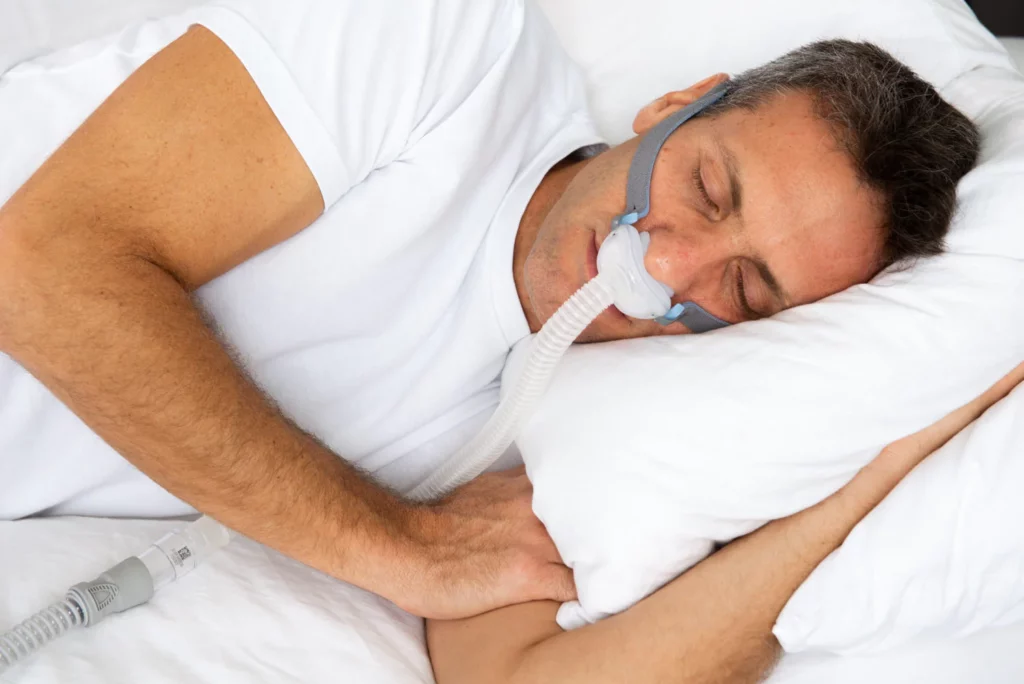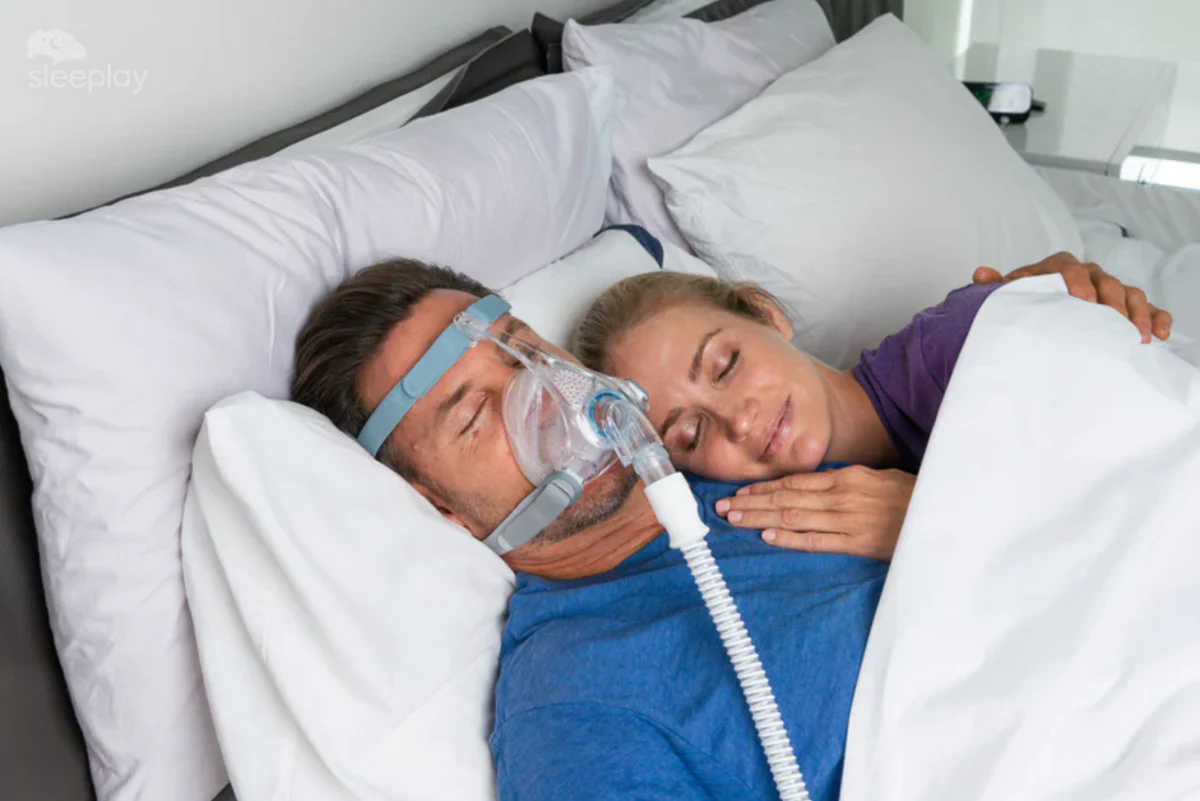If you’ve recently been diagnosed with sleep apnea, you may have been prescribed a CPAP (Continuous Positive Airway Pressure) machine to help manage the condition. While this may be your first experience with CPAP therapy, it’s essential to understand how the machine works, the types available, and how to set it up and use it properly for optimal benefits. This guide will walk you through everything you need to know about setting up your first CPAP machine, from understanding sleep apnea to selecting the right machine and maintaining it for long-term use.
Introduction
CPAP machines are widely prescribed for people with sleep apnea, a condition where a person’s breathing repeatedly stops and starts during sleep. These interruptions in breathing can cause a drop in oxygen levels, leading to poor sleep quality and a range of health problems. CPAP machines are designed to provide a continuous stream of air through a mask that helps keep the airway open, preventing these disruptions.
They are commonly prescribed for Obstructive Sleep Apnea (OSA), the most common type of sleep apnea, and have proven to be highly effective in improving sleep quality and overall health. With regular use, CPAP machines can help alleviate symptoms such as snoring, daytime fatigue, and the increased risk of conditions like high blood pressure, heart disease, and stroke.
See more: Perth Sleep Studies: Home vs Lab-Based Testing Options
What is Sleep Apnea and How CPAP Machines Help
Sleep apnea is a disorder where breathing stops and starts during sleep. The most common type is Obstructive Sleep Apnea (OSA), caused by the relaxation of throat muscles that block the airway. Other types include Central Sleep Apnea, where the brain fails to signal the muscles to breathe, and Complex Sleep Apnea, a combination of both obstructive and central sleep apnea.
CPAP machines help manage OSA by delivering a continuous flow of air through a mask that keeps the airway open. This continuous air pressure prevents the airway from collapsing, allowing the user to breathe continuously throughout the night. This eliminates the disruptive pauses in breathing, improves oxygen levels, and ensures a restful, uninterrupted sleep.
Types of CPAP Machines
There are several types of CPAP machines, each designed for specific needs. Here’s an overview of the most common ones:
- Standard CPAP (Continuous Positive Airway Pressure):
- How it Works: Delivers a constant flow of air at a fixed pressure to maintain an open airway.
- Benefits: Simple, reliable, and cost-effective. Ideal for those with mild to moderate OSA.
- Limitations: Fixed pressure may not adjust to fluctuations in your breathing patterns during the night.
- Auto-CPAP (Auto Adjusting CPAP):
- How it Works: Automatically adjusts the air pressure based on real-time feedback of your breathing. It increases the pressure when you need more air and decreases it when you breathe normally.
- Benefits: Provides a personalized experience by adjusting to your changing needs throughout the night.
- Limitations: More expensive than standard CPAP machines.
- BiPAP (Bilevel Positive Airway Pressure):
- How it Works: Provides two pressure settings: higher pressure for inhalation and lower pressure for exhalation. This makes it easier to exhale.
- Benefits: Ideal for people with complex sleep apnea or other respiratory conditions that make exhaling against continuous pressure difficult.
- Limitations: Typically more expensive and complex than standard CPAP machines.
How to Choose the Right CPAP Machine
Selecting the right CPAP machine is crucial for your comfort and effectiveness. Here are a few things to consider:
- Comfort: Look for machines that offer features such as adjustable pressure settings, ramp functions (gradually increasing the pressure), and humidifiers to add moisture to the air.
- Noise Level: If you or your partner are sensitive to noise, choose a quieter model. Many newer CPAP machines operate quietly for a peaceful night’s sleep.
- Portability: For frequent travelers, consider a compact and lightweight CPAP machine. Many devices come with a travel-friendly carrying case.
- Price: Standard CPAP machines are generally more affordable, while Auto-CPAP and BiPAP machines tend to be more expensive due to their advanced features.
Consulting with your healthcare provider will ensure that you choose the machine best suited to your needs.

CPAP Machine Setup and Usage
Now that you’ve selected your CPAP machine, here’s how to set it up and start using it:
- Unbox and Assemble: Connect the CPAP machine to the power source and attach the tubing to both the machine and the mask. If the machine has a humidifier, fill the water chamber with distilled water.
- Adjust Settings: For standard CPAP machines, your doctor will set the appropriate pressure. Auto-CPAP machines automatically adjust the pressure as needed based on your breathing patterns.
- Fit the Mask: Choose the right type of mask (nasal, full-face, or nasal pillows) and ensure it fits snugly but comfortably to avoid air leaks.
- Start Using the Machine: Turn the CPAP machine on before going to sleep. Keep the machine running throughout the night. The more consistently you use the machine, the better the results.
Troubleshooting Tips:
- Air Leaks: Make sure the mask is securely fitted and adjust the straps as needed to prevent leaks.
- Dry Mouth: Use a heated humidifier to add moisture to the air, or switch to a full-face mask to prevent mouth breathing.
- Noisy Machine: Ensure the machine is placed on a stable, flat surface, and check the filter for blockages to reduce noise.
CPAP Machine Accessories and Maintenance
To get the most out of your CPAP therapy, you’ll need a few essential accessories:
- Masks: Masks come in various styles, including nasal masks, nasal pillows, and full-face masks. Clean your mask daily to prevent bacteria buildup. Replace it every 6 to 12 months for optimal performance.
- Tubing: Clean the tubing weekly with mild soap and warm water. Replace the tubing every 6 to 12 months to prevent mold and bacteria growth.
- Filters: Replace the air filter monthly to ensure clean airflow. Dirty filters can cause the machine to work inefficiently and may affect air quality.
- Humidifiers: If you use a humidifier, clean it regularly to avoid mold or bacteria growth.
Benefits of Using a CPAP Machine
Using a CPAP machine offers several health benefits beyond just improving sleep quality:
- Improved Sleep Quality: CPAP machines prevent breathing interruptions, allowing you to experience deeper, more restful sleep.
- Reduced Risk of Heart Disease: Sleep apnea is linked to high blood pressure, stroke, and heart disease. CPAP therapy helps reduce these risks by ensuring consistent oxygen levels during sleep.
- Increased Energy: Better sleep quality means more energy and alertness during the day, reducing daytime fatigue and improving overall mood.
- Reduced Snoring: CPAP machines help eliminate snoring, benefiting both the user and their partner.
Common CPAP Machine Problems and How to Solve Them
Though CPAP machines are effective, users may encounter some issues. Here’s how to resolve common problems:
- Air Leaks: If air leaks occur, adjust the mask to ensure a better seal. Tightening the straps or switching to a different mask may help.
- Dry Mouth: This can be prevented by using a heated humidifier or switching to a full-face mask if you breathe through your mouth.
- Discomfort: Try different mask types or use cushion pads to improve comfort.
Cost of CPAP Machines and Insurance Coverage
CPAP machines vary in price depending on the type and features:
- Standard CPAP Machines: Typically range from $200 to $800.
- Auto-CPAP Machines: Range from $500 to $1,500.
- BiPAP Machines: Typically cost $1,000 or more.
Insurance Coverage: Most insurance plans cover CPAP machines when they are medically prescribed. Be sure to check with your insurance provider to determine the coverage and what out-of-pocket expenses you may incur.
Conclusion
Setting up your first CPAP machine can seem overwhelming, but by following these steps and using the right accessories, you can ensure that you get the maximum benefit from your therapy. CPAP machines offer numerous health benefits, including improved sleep, increased energy, and a reduced risk of heart disease. Regular maintenance, consistent use, and troubleshooting can help you resolve any issues and get the most out of your CPAP therapy. If you have sleep apnea or suspect you might, consult your healthcare provider to determine if a CPAP machine is right for you. Quality sleep is the foundation of a healthy life, and CPAP therapy can help you achieve it.
5

